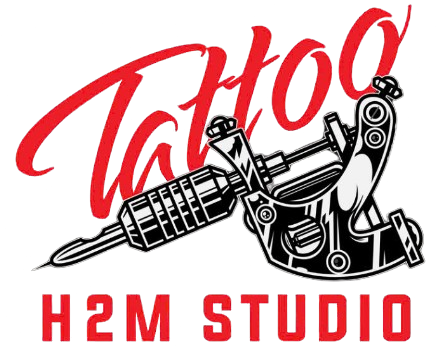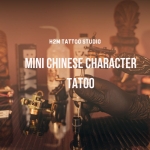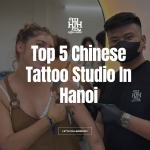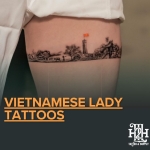Vietnam tattoo designs represent some of the world's most meaningful body art, blending millennia of spiritual beliefs with stunning visual artistry. At H2M Tattoo Studio, we've witnessed firsthand how these ancient symbols—from protective dragons to sacred lotus flowers—continue captivating modern tattoo enthusiasts seeking deeper meaning in their ink.
>>>> READ MORE: Vietnam Tattoos
Historical Origins of Vietnamese Tattooing
Vietnamese tattooing traditions stretch back over 2,000 years, deeply rooted in the spiritual practices and social customs of ancient Southeast Asian civilizations. Archaeological evidence from the Dong Son culture (1000 BCE - 100 CE) reveals bronze drums decorated with spiral patterns and geometric designs that closely resemble tattoo motifs still popular today.
The practice initially served multiple purposes beyond decoration. Ancient Vietnamese warriors tattooed protective symbols before battle, believing these markings would shield them from harm and ensure victory. Shamans and spiritual leaders used tattoos as conduits for communicating with ancestral spirits, while fishermen and farmers marked themselves with symbols representing their connection to nature's forces.
During various dynastic periods, tattooing practices evolved and adapted:
-
Lý Dynasty (1009-1225): Buddhist influences introduced lotus and dharma wheel motifs
-
Trần Dynasty (1225-1400): Military tattoos became standardized among royal guards
-
Lê Dynasty (1428-1789): Confucian philosophy influenced scholarly and calligraphic tattoo styles
-
Nguyễn Dynasty (1802-1945): Court artists refined traditional designs into sophisticated artistic forms
French colonization (1887-1954) temporarily suppressed traditional tattooing, viewing it as "primitive." However, rural communities preserved these practices, ensuring their survival into the modern era. This historical resilience demonstrates the deep cultural importance of Vietnamese tattoo traditions.
>>>> SEE MORE: 5 Sacred Small vietnamese tattoo Designs That Carry Big Cultural Meaning
Symbolism in Traditional Vietnamese Tattoos
Understanding the symbolism behind Vietnamese tattoo designs is crucial for appreciating their cultural significance. Each motif carries layers of meaning that reflect Vietnamese philosophy, spirituality, and worldview.
1. Dragons (Rồng) Vietnamese dragons differ significantly from their Chinese counterparts, representing benevolent water spirits rather than fire-breathing beasts. They symbolize imperial power, wisdom, and protection. The Vietnamese dragon typically has a snake-like body with four legs and is often depicted without wings, emphasizing its connection to water and earth elements.
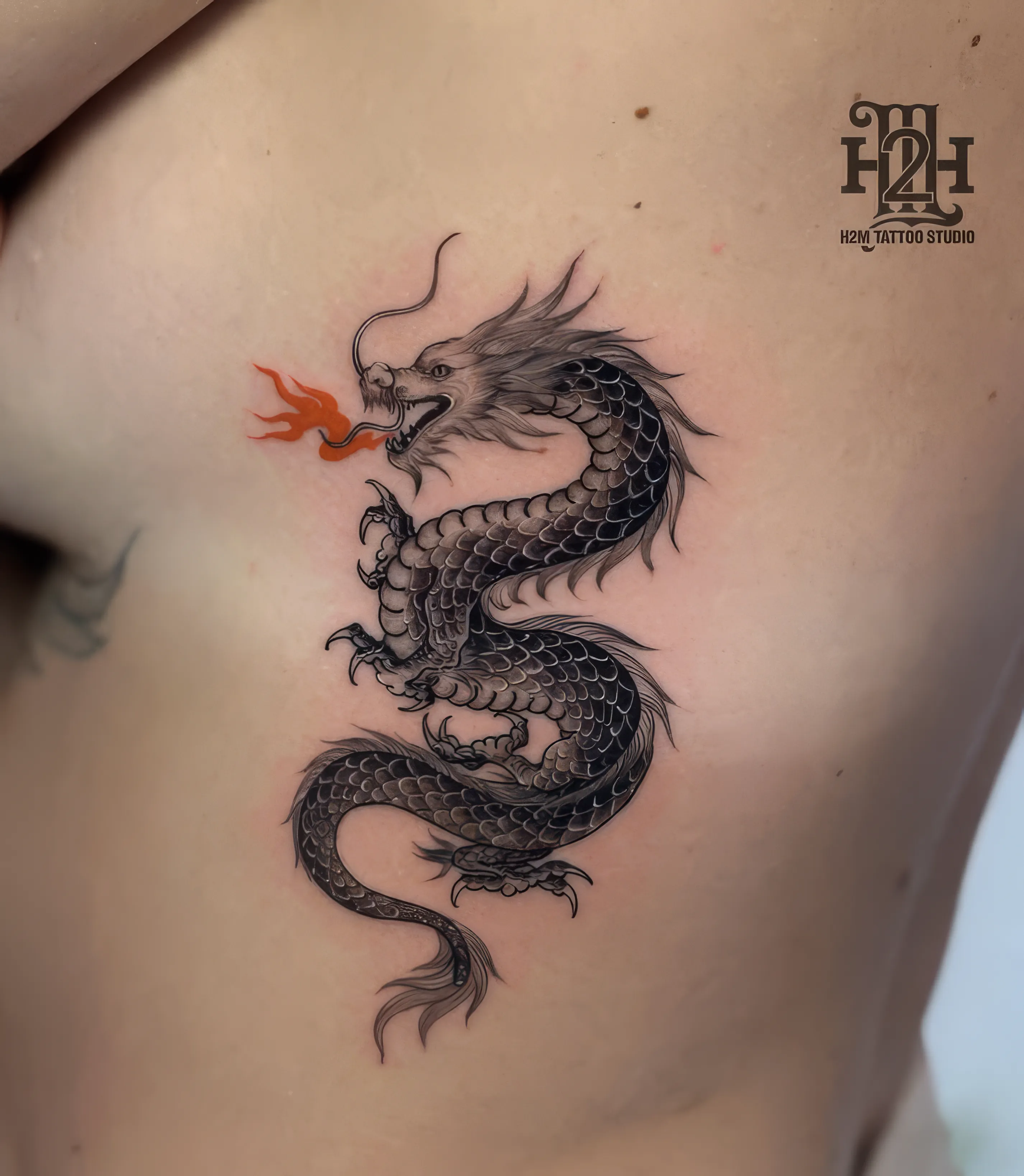
2. Lotus Flowers (Hoa Sen) Perhaps the most beloved symbol in Vietnamese culture, the lotus represents purity, enlightenment, and rebirth. Growing from muddy waters to bloom in pristine beauty, the lotus tattoo symbolizes overcoming adversity and achieving spiritual growth. Different bloom stages represent various life phases and spiritual development levels.
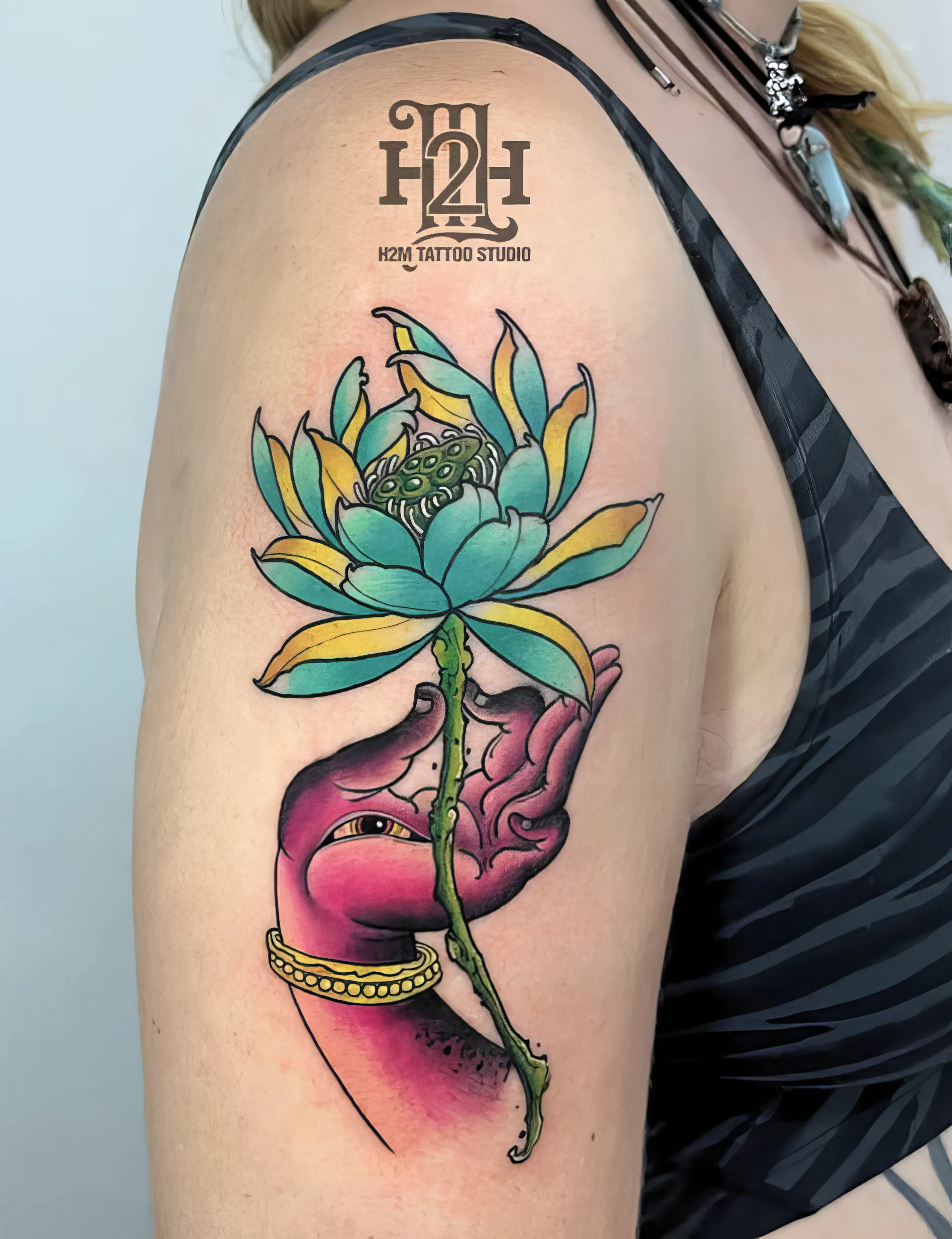
3. Sacred Birds (Chim Thiêng) Vietnamese sacred birds embody feminine power, virtue, and renewal. Unlike Western bird mythology focused on singular symbolism, Vietnamese sacred birds represent harmony between opposing forces and the cyclical nature of life. These tattoos often feature elaborate tail feathers and graceful poses, with cranes symbolizing longevity and swallows representing good fortune and safe travels.
4. Tigers (Hổ) Representing courage, strength, and protection against evil spirits, tiger tattoos are particularly popular among men. Vietnamese tiger designs emphasize the animal's spiritual power rather than its ferocity, often incorporating flowing lines that suggest movement through mystical realms.
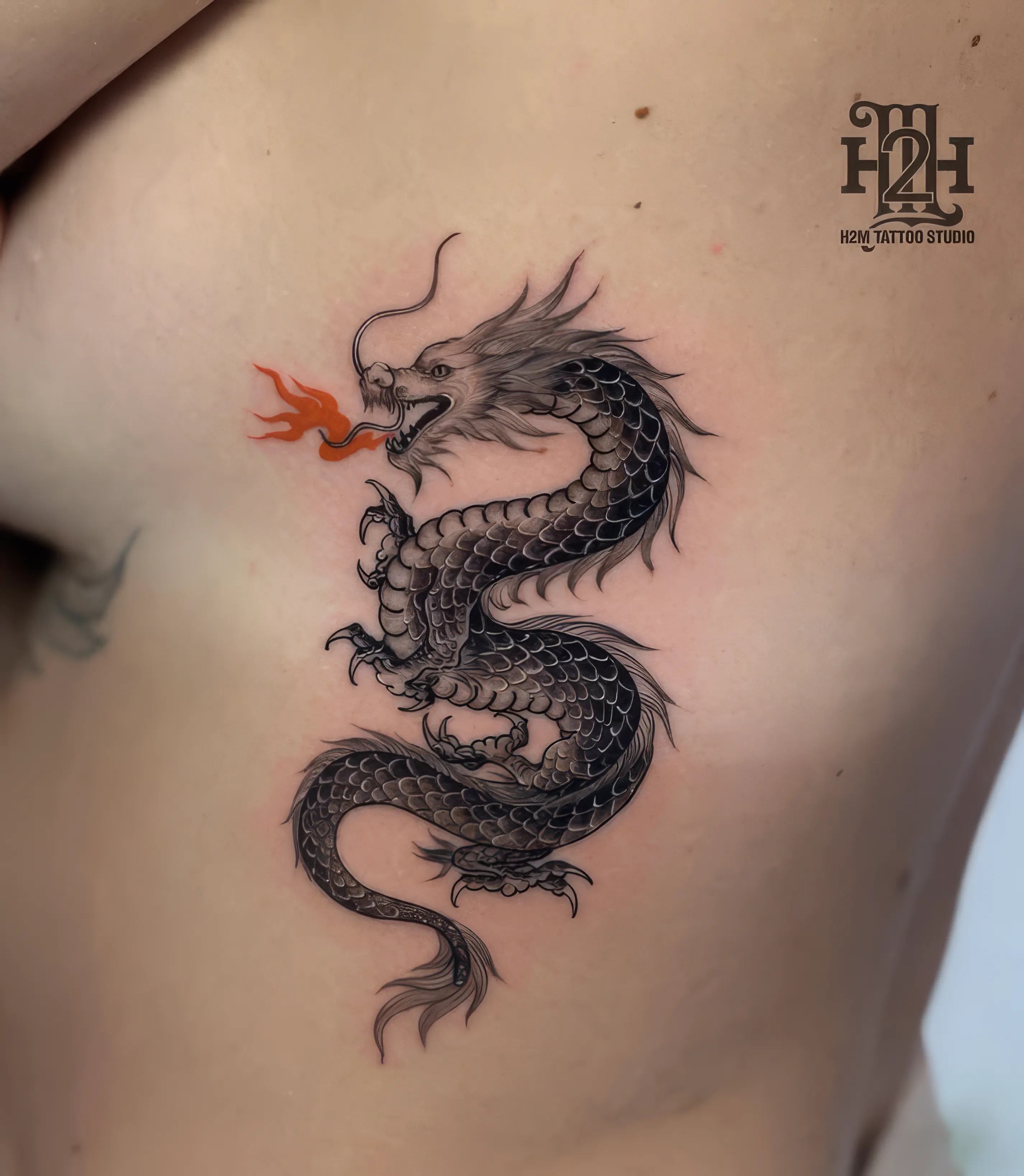
5. Bamboo (Tre) Bamboo symbolizes flexibility, resilience, and humble strength. Vietnamese proverbs often reference bamboo's ability to bend without breaking, making it a popular choice for those who have overcome significant challenges or wish to cultivate inner strength.
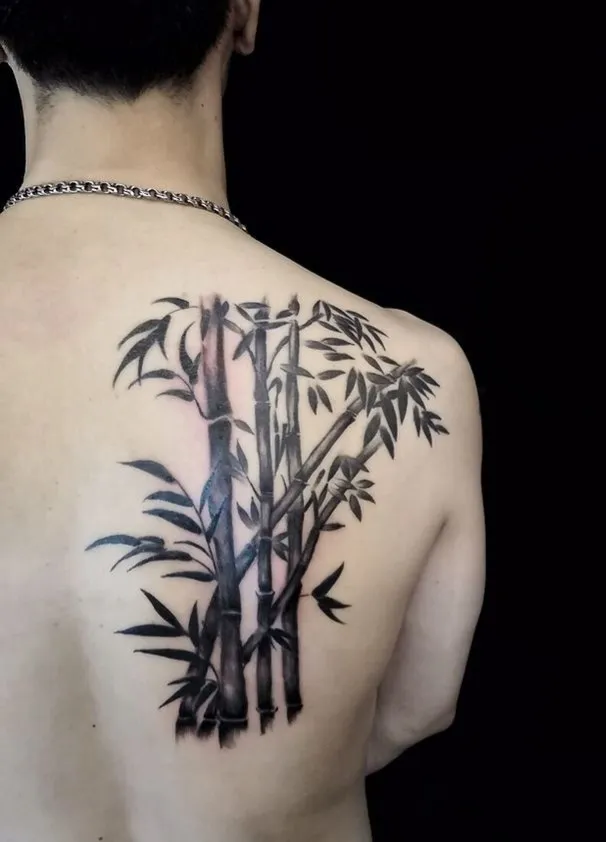
6. Koi Fish (Cá Chép) Borrowed from Chinese tradition but adapted to Vietnamese sensibilities, koi fish represent perseverance, determination, and transformation. The legend of koi swimming upstream to become dragons resonates deeply with Vietnamese cultural values of self-improvement through persistent effort.
Vietnamese calligraphy often accompanies these symbolic elements, adding layers of meaning through carefully chosen words or phrases that complement the visual imagery.
>>>> READ MORE: 10 Sacred vietnamese inspired tattoos Connecting You to Heritage
Vietnamese Calligraphy and Script in Tattoos
Vietnamese calligraphic tattoos represent one of the most sophisticated forms of body art, combining visual beauty with profound literary meaning. Two primary scripts dominate Vietnamese tattoo culture, each carrying distinct cultural associations.
Hán-Nôm Script represents the classical writing system used for centuries in Vietnamese literature, philosophy, and religious texts. These characters, derived from Chinese but adapted for Vietnamese pronunciation, create tattoos with deep historical resonance. Popular Hán-Nôm tattoo phrases include ancient proverbs about family honor, personal virtue, and spiritual cultivation.
Quốc Ngữ Script, the modern Vietnamese alphabet using Latin characters with diacritical marks, offers more accessible options for contemporary tattoo enthusiasts. This script allows for greater creative flexibility in font styles while maintaining cultural authenticity.
Common Vietnamese tattoo phrases include:
-
"Tình mẫu tử" (Mother's love) - expressing filial devotion
-
"Bách nhẫn thành kim" (A hundred tolerances become gold) - emphasizing patience's value
-
"Uống nước nhớ nguồn" (When drinking water, remember the source) - honoring one's origins
-
"Lá rụng về cội" (Fallen leaves return to their roots) - representing homecoming
Master calligraphers often collaborate with tattoo artists to ensure proper brush stroke flow and character proportions. The placement and orientation of calligraphic tattoos follow traditional rules, with vertical arrangements preferred for formal phrases and horizontal layouts for poetic expressions.
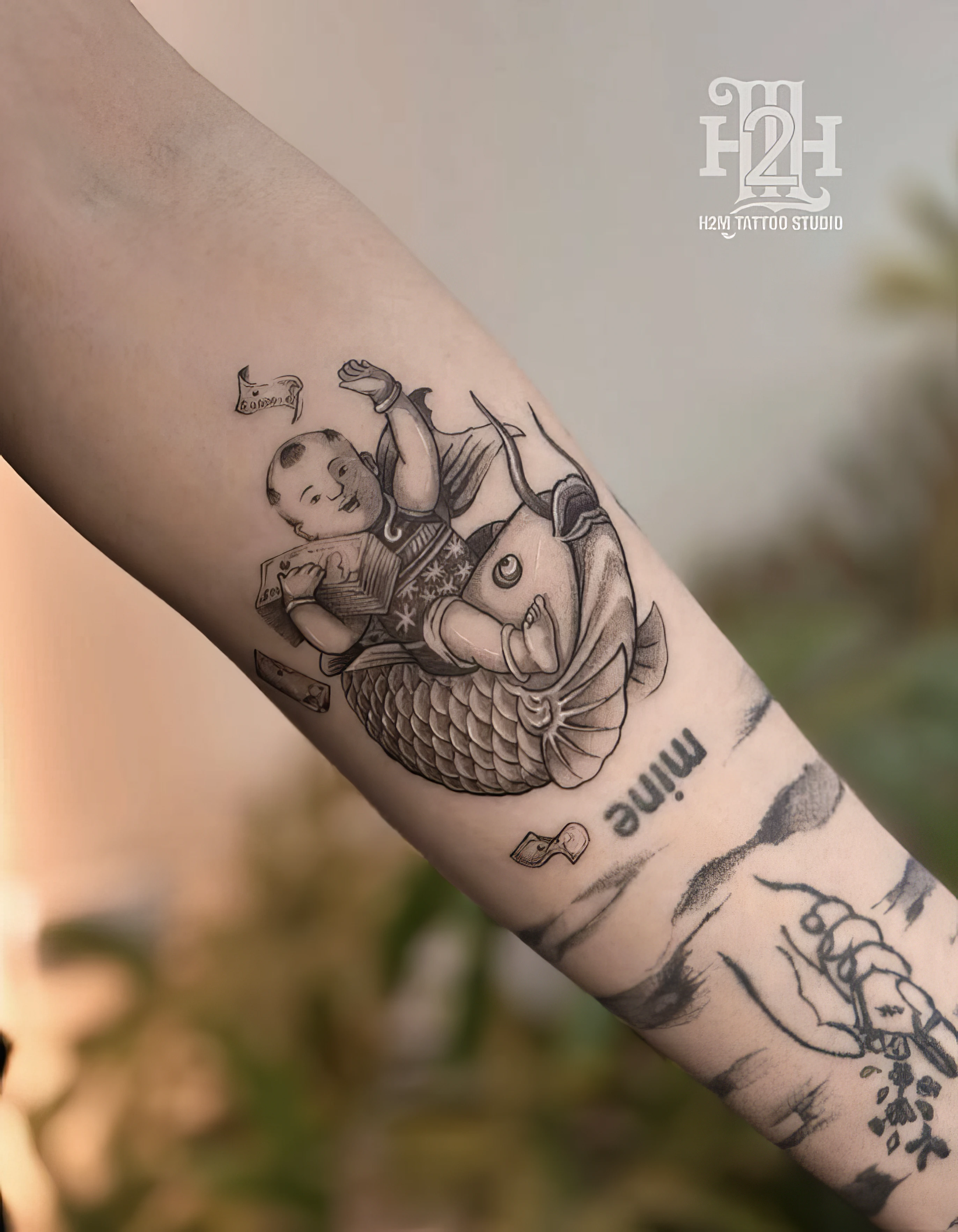
>>>> TRY MORE: vietnamese symbol tattoo s: Ancient Meanings Hidden in Sacred Ink
Regional and Ethnic Tattoo Styles Within Vietnam
Vietnam's cultural diversity manifests in distinct regional tattooing traditions that reflect local customs, beliefs, and artistic preferences. Understanding these variations provides insight into the country's rich ethnic tapestry.
Northern Vietnam's tattoo traditions show strong Chinese influence due to centuries of cultural exchange. Designs typically feature more geometric patterns, formal compositions, and Confucian philosophical elements. Dragons in northern styles often appear more serpentine and elegant, reflecting court artistic traditions.
Central Vietnam, home to the ancient Cham civilization, incorporates Hindu and Islamic design elements alongside Vietnamese motifs. Cham tattoo traditions feature Sanskrit script, temple architectural patterns, and unique interpretations of protective symbols that blend Buddhist and Hindu iconography.
Southern Vietnam's tattoo culture reflects its frontier history and diverse immigrant populations:
-
Khmer influences: Geometric patterns and Buddhist temple designs from Cambodian communities
-
Chinese diaspora styles: Incorporating Cantonese and Teochew cultural elements
-
Cao Dai religious symbols: Unique to Vietnam's indigenous religious movement
-
Water buffalo motifs: Celebrating agricultural heritage in the Mekong Delta region
Ethnic minority groups contribute distinctive tattooing traditions:
-
Hmong people: Intricate geometric patterns believed to guide souls in the afterlife
-
Dao people: Spiritual protection tattoos using natural pigments and traditional tools
-
Ede people: Matriarchal society symbols and rice cultivation motifs
These regional variations demonstrate how Vietnamese tattoo culture adapts to local conditions while maintaining core symbolic meanings.
>>>> READ MORE: Vietnamese Tattoo Ideas for 2025 – Meaningful and Traditional Designs
Modern Vietnamese Tattoo Culture
Contemporary Vietnamese tattoo culture has experienced remarkable growth since the 1990s, evolving from underground practice to mainstream artistic expression. Modern Vietnamese tattoo artists skillfully blend traditional motifs with international techniques, creating innovative designs that honor cultural heritage while appealing to global aesthetics.
The emergence of professional tattoo studios in major cities like Ho Chi Minh City, Hanoi, and Da Nang has elevated Vietnamese tattooing to international standards. These studios maintain strict hygiene protocols while fostering environments where traditional knowledge passes between generations of artists.
Notable aspects of modern Vietnamese tattoo culture include the integration of contemporary art movements with classical designs. Artists experiment with watercolor techniques, geometric abstractions, and neo-traditional styles while preserving the spiritual significance of original motifs. This fusion creates tattoos that speak to both Vietnamese cultural identity and modern artistic sensibilities.
Social media has played a crucial role in promoting Vietnamese tattoo art internationally. Platforms like Instagram and TikTok showcase the work of talented Vietnamese artists, attracting clients from around the world who seek authentic cultural tattoos. This global interest has encouraged artists to refine their techniques and expand their creative horizons.
Professional tattoo education programs now exist in Vietnam, ensuring that new artists learn both technical skills and cultural sensitivity. These programs emphasize the importance of understanding symbolic meanings and respecting cultural traditions while encouraging artistic innovation.
Popular Vietnamese Tattoo Designs in 2025
Current trends in Vietnamese tattoo designs reflect a sophisticated blend of traditional symbolism with contemporary artistic techniques. These designs appeal to both Vietnamese nationals seeking to honor their heritage and international clients drawn to the profound meanings behind Vietnamese imagery.
Dragon and Phoenix Combinations: Representing the perfect balance of masculine and feminine energies, these paired designs have become increasingly popular among couples and individuals seeking harmony in their lives. Modern interpretations often feature flowing, interconnected compositions that create stunning visual narratives across larger body areas.
Minimalist Lotus Designs: Simple, elegant lotus tattoos appeal to clients preferring subtle body art with deep meaning. Artists create these using fine linework and selective shading that emphasizes the flower's natural grace while maintaining powerful symbolic significance.
Vietnamese Landscape Tattoos: Ha Long Bay, terraced rice fields, and ancient temples feature prominently in contemporary designs. These tattoos celebrate Vietnam's natural beauty while incorporating traditional architectural elements and cultural symbols.
Calligraphy Integration: Modern artists seamlessly blend Vietnamese script with traditional imagery, creating compositions where words and pictures complement each other. Popular phrases include family mottos, philosophical quotes, and personal mantras that reflect individual values.
Neo-Traditional Animal Motifs: Traditional animals like tigers, elephants, and cranes receive contemporary artistic treatments while preserving their cultural significance. These designs often feature bold colors, dynamic poses, and detailed backgrounds that tell complete stories.
Ancestor Honor Tattoos: Designs celebrating family heritage and ancestral wisdom have gained popularity, particularly among younger Vietnamese people living abroad. These tattoos often incorporate family crests, ancestral portraits, or symbolic representations of family history.
The trend toward larger, more complex pieces reflects growing appreciation for Vietnamese tattoo artistry and increased willingness to invest in meaningful, culturally significant body art.
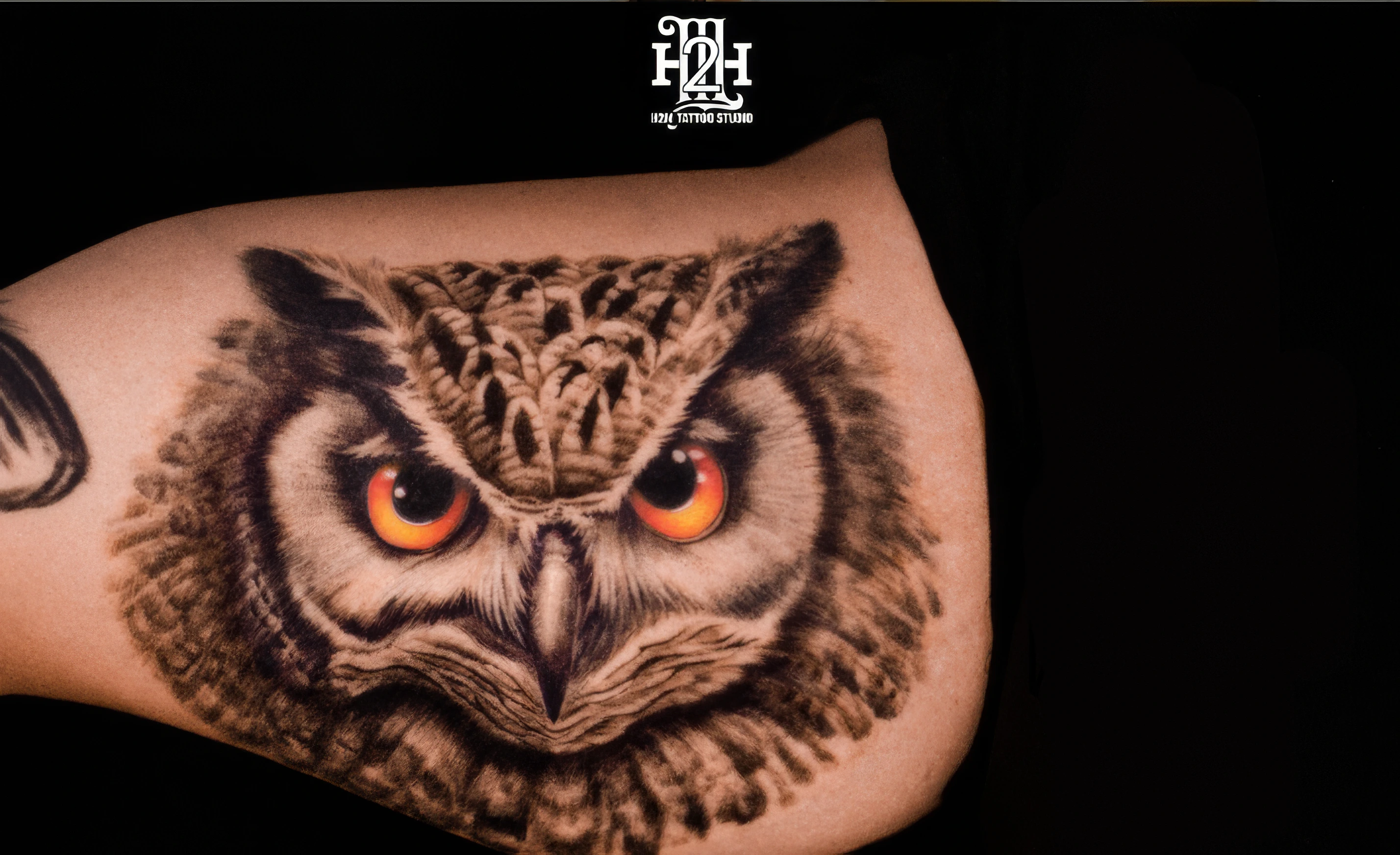
Choosing and Customizing Vietnamese Tattoos
Selecting an authentic Vietnamese tattoo requires careful consideration of cultural significance, personal meaning, and artistic execution. The process should begin with thorough research into the symbols and meanings that resonate with your personal story and values.
Understanding cultural context is paramount when choosing Vietnamese tattoo designs. Each symbol carries specific meanings that should align with your intentions and respect Vietnamese cultural traditions. For example, dragon tattoos traditionally represent protection and wisdom, making them appropriate for those seeking guidance or strength, but inappropriate for purely aesthetic purposes without understanding their significance.
Collaboration with knowledgeable artists ensures both cultural authenticity and artistic quality. Seek artists who demonstrate understanding of Vietnamese symbolism and can explain the meanings behind proposed designs. Experienced artists will ask about your motivations and suggest modifications that honor traditional meanings while creating personally meaningful artwork.
Consider these factors when customizing your design:
-
Size and placement: Traditional Vietnamese tattoos often follow specific placement rules based on symbolic meanings
-
Color choices: Different colors carry varying cultural significance in Vietnamese tradition
-
Complementary elements: Additional symbols or background elements should harmonize with main motifs
-
Personal connections: Include elements that reflect your relationship to Vietnamese culture or personal experiences
Research the artist's background and portfolio thoroughly. Look for examples of previous Vietnamese-inspired work and evidence of cultural sensitivity in their approach. Many reputable artists specializing in Vietnamese designs have studied with traditional practitioners or spent significant time learning about Vietnamese culture.
Budget appropriately for quality work. Authentic Vietnamese tattoos require skilled artisanship and attention to cultural detail, which commands higher prices than generic designs. Consider this investment in meaningful, culturally respectful body art that will maintain its significance over time.
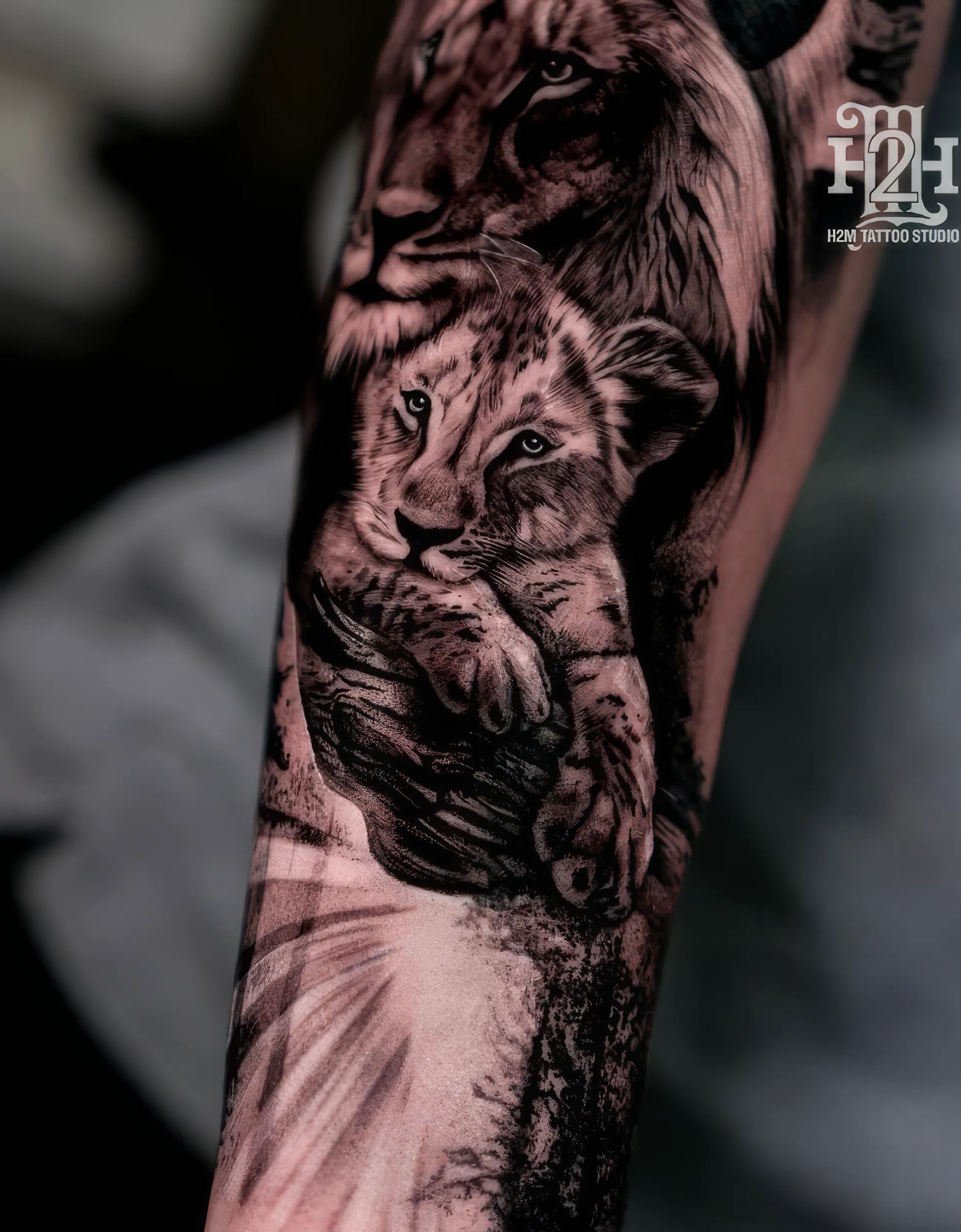
Vietnamese Tattoo Etiquette
Understanding Vietnamese cultural attitudes toward tattoos is essential for anyone considering Vietnamese-inspired body art. Traditional Vietnamese society has historically viewed tattoos with mixed feelings, associating them with both spiritual protection and social rebellion.
In contemporary Vietnam, tattoo acceptance varies significantly between generations and social groups. Younger Vietnamese people, particularly in urban areas, increasingly embrace tattoo culture as a form of self-expression and artistic appreciation. However, older generations may still associate tattoos with criminal elements or view them as inappropriate for professional settings.
Religious considerations also influence social perception. Buddhist and Catholic communities, which comprise significant portions of Vietnam's population, hold varying views on body modification. Some Buddhist practitioners view tattoos as spiritual protection, while others consider them attachments to physical form that impede spiritual progress.
Professional implications require careful consideration. Many Vietnamese companies and government positions maintain conservative dress codes that expect tattoo concealment. International businesses operating in Vietnam generally show greater tattoo tolerance, but cultural sensitivity remains important for career advancement.
For non-Vietnamese individuals, showing genuine interest in and respect for Vietnamese culture enhances social acceptance. Learning basic Vietnamese phrases, understanding historical context, and demonstrating cultural appreciation typically generate positive responses from Vietnamese communities.
Tattoo Care and Maintenance in Vietnamese
Proper tattoo care ensures both healing success and long-term preservation of your Vietnamese-inspired artwork. Traditional Vietnamese healing practices offer valuable insights alongside modern aftercare techniques.
Immediate aftercare follows standard international protocols with culturally informed modifications:
-
Keep the tattoo clean and dry: Use antibacterial soap and avoid soaking in water for the first two weeks
-
Apply healing ointments: Traditional Vietnamese healing includes aloe vera and coconut oil, both excellent for tattoo care
-
Protect from sun exposure: Vietnam's intense tropical sun can fade tattoos quickly; use high-SPF sunscreen consistently
-
Avoid swimming: Saltwater and chlorinated pools can irritate healing tattoos and increase infection risk
Traditional Vietnamese medicine emphasizes balancing internal health for optimal healing. Consider incorporating these practices:
-
Herbal teas: Green tea and lotus leaf tea provide antioxidants that support skin healing
-
Balanced diet: Vietnamese cuisine's emphasis on fresh herbs, vegetables, and lean proteins supports healthy skin regeneration
-
Adequate rest: Traditional medicine recognizes sleep's importance for healing and recovery
Long-term maintenance requires ongoing attention to preserve color vibrancy and line sharpness. Vietnamese climate conditions demand special consideration:
-
Humidity management: High humidity can affect healing; ensure proper air circulation around healing tattoos
-
Monsoon protection: During rainy seasons, keep tattoos completely dry and avoid tight clothing that traps moisture
-
Regular moisturizing: Use quality lotions to maintain skin elasticity and prevent cracking that can damage tattoo artwork
Schedule regular touch-ups with qualified artists familiar with Vietnamese designs. Complex traditional motifs may require periodic maintenance to preserve their cultural authenticity and artistic integrity.
Whether you're Vietnamese seeking to honor your heritage or someone drawn to the profound symbolism of Vietnamese culture, these Vietnam tattoo designs offer pathways to meaningful self-expression. At H2M Tattoo Studio, we believe Vietnam tattoo designs represent the perfect fusion of ancient wisdom and contemporary artistry. These timeless symbols—from protective dragons to sacred lotus flowers—offer individuals a meaningful way to honor Vietnamese culture while expressing their personal journey.
>>>> NOTE NOW:

